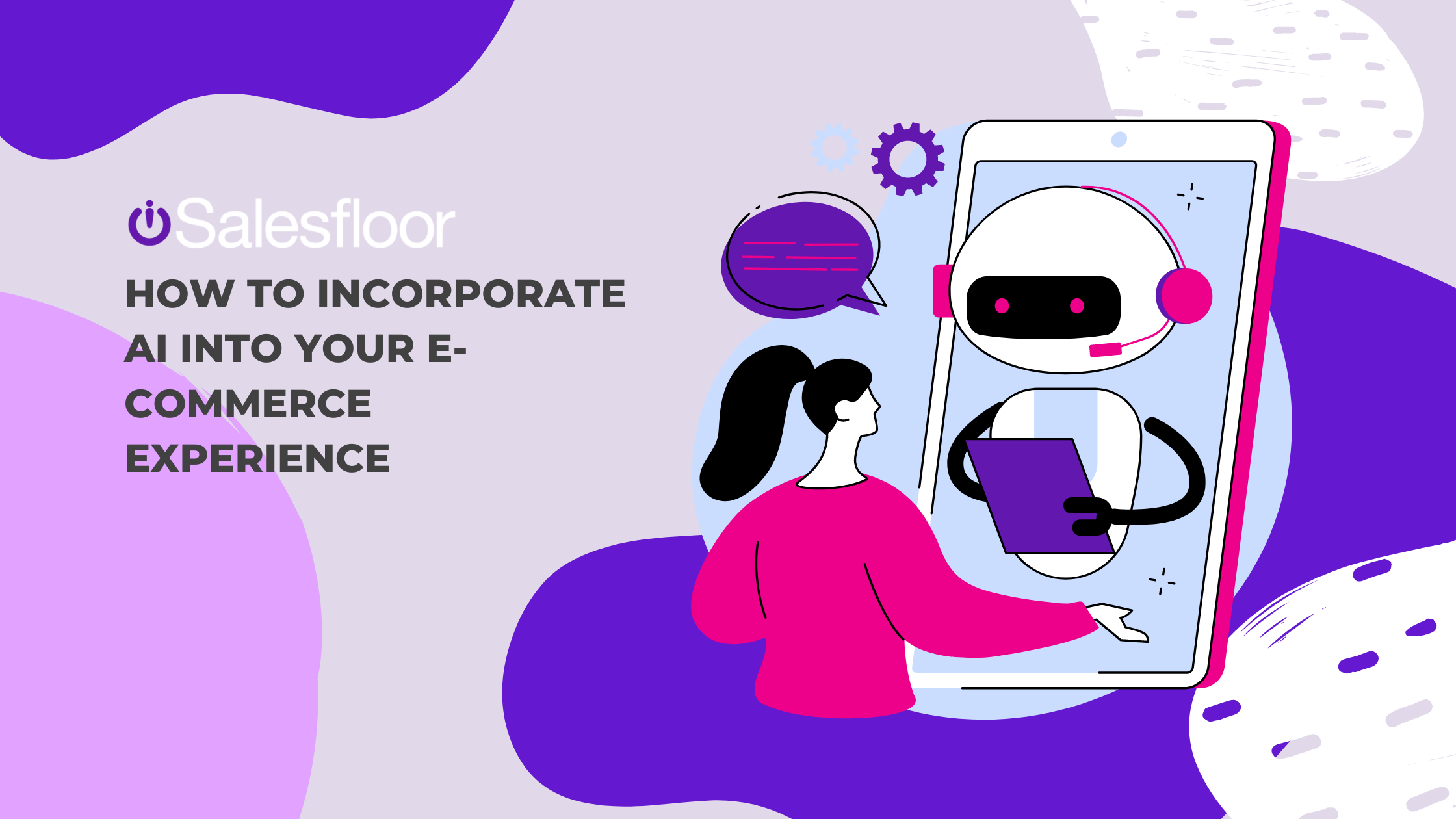
In today's fast-paced digital landscape, staying ahead of the curve is essential for any e-commerce retailer. As technology evolves, artificial intelligence (AI) has emerged as a game-changer, transforming how online retailers operate and interact with their customers. From personalized recommendations to efficient customer service, AI offers a myriad of opportunities to enhance the shopping experience and streamline operations.
In this blog post, we will explore how you can seamlessly integrate AI into your e-commerce platform to boost customer satisfaction, increase sales, and gain a competitive edge. Whether you're a small business owner or part of a large retail enterprise, discover the innovative ways AI can help you meet and exceed your business goals.
Implementing AI-Powered Personalization Strategies
A. Building a Framework for Personalization
1. Identifying Key Personalization Objectives and Goals
Before diving into personalization, it's crucial to know what you want to achieve. Do you want to boost sales, increase customer loyalty, or improve customer satisfaction? Setting clear objectives and goals will help guide your personalization efforts and ensure they align with your overall business strategy.
2. Understanding Your Target Audience and Segmentation
To personalize effectively, you need to know who you're personalizing for. Understanding your target audience and breaking it down into segments based on factors like demographics, behavior, and preferences will help you tailor your efforts to different groups and make your personalization more relevant and impactful.
3. Integrating AI Capabilities into Existing Systems
AI is a powerful tool for personalization, but it needs to work seamlessly with your existing systems. Integrating AI capabilities into your e-commerce platform, CRM, and other systems will enable you to leverage data and insights to deliver personalized experiences across all customer touchpoints.
4. Establishing Metrics for Measuring Personalization Success
To know if your personalization efforts are paying off, you need to measure their impact. Establishing metrics like conversion rates, customer retention rates, and average order value will help you track the success of your personalization and make data-driven decisions to optimize your strategy.
B. How to Incorporate AI into Your Ecommerce Experience
1. Implementing AI-Driven Recommendation Engines
One of the best ways to start with AI is by adding a recommendation engine to your online store. This tool uses AI to analyze customer data and suggest products they might like based on their browsing and buying history. It's like having a personal shopper for each customer, helping them discover new favorites and making their shopping experience more enjoyable.
2. Using Conversational AI for Personalized Customer Interactions
Conversational AI is another great tool for ecommerce. The conversational chatbot can converse with customers, answer their questions, and even help them find products. The best part? They're available 24/7, so your customers can get help anytime they need it. Plus, conversational AI learns from each interaction, getting better at providing personalized support over time.
3. Using AI for Dynamic Pricing and Promotions
AI can also help you with pricing and promotions. It can analyze data like customer demand, competitor prices, and market trends to suggest the best prices for your products. This way, you can stay competitive and attract more customers with appealing deals.
4. Enhancing User Experience with AI-Powered Search and Navigation
Finally, AI can make searching and navigating your online store a breeze. AI-powered search engines can understand what customers are looking for, even if they use natural language or make spelling mistakes. And AI can help organize your site in a way that makes sense to your customers, so they can find what they need quickly and easily.
C. How to use AI Data to Improve Personalization
1. Collecting and Analyzing Customer Data for Insights
The first step in using AI to improve personalization is collecting data about your customers. This can include their browsing history, purchase history, and even how they interact with your website or app. Once you have this data, AI can analyze it to find patterns and insights, helping you understand what your customers want and how they behave.
2. Using Machine Learning for Predictive Analytics
Machine learning is great for predictive analytics. It can take the data you've collected and use it to make predictions about what your customers might do in the future. For example, it can predict which products they might be interested in, when they might be ready to make a purchase, or even how much they're willing to spend.
3. Continuously Updating Personalization Strategies Based on Data Feedback
One of the best things about AI is that it can learn and improve over time. As you collect more data and get feedback on your personalization efforts, AI can help you refine and update your strategies. This means your personalization can get better and better, making your customers' experiences more tailored.
4. Ensuring Data Privacy and Security in AI Applications
It's important to remember that with great data comes great responsibility. When using AI for personalization, you need to respect your customers' privacy and keep their data secure. This means following data protection laws and being transparent about how you're using their information.
D. Customizing Recommendations and Marketing
1. Utilize Conversational AI for Hyper Personalized Recommendations
Consider implementing a conversational AI, like Salesfloor’s Maestro AI™. Maestro AI™ transforms retail experiences by offering hyper-personalized recommendations through a trained ChatGPT LLM combined with dynamic visual browsing and AI product tagging. By analyzing real-time customer data, Maestro AI™ tailors suggestions to individual preferences and behaviors, enhancing relevance and boosting conversion rates. This technology ensures that each interaction is not just personalized, but also deeply resonant, making every shopping journey uniquely satisfying for customers.
2. Tailoring Product Recommendations to Individual Preferences
With tools like Maestro AI's™ Visual Browsing & AI Product Tagging, retailers can integrate visual examples from their product catalog in the conversation itself using image & text-based AI tagging. Shopping intelligence visual clustering of products that share important characteristics and presents these product groups to the shopper visually, allowing for individualized product recommendations that convert.



.png?width=1200&height=628&name=Jewelry%20%26%20(1200%20x%20628%20px).png)